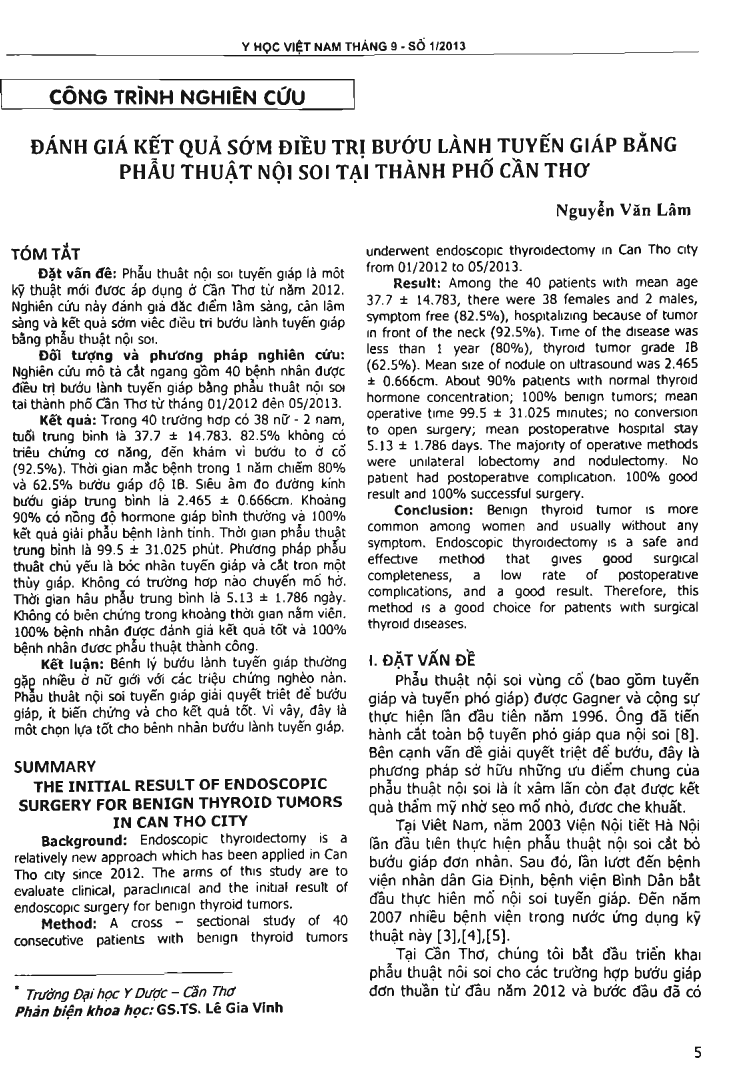
Background: Endoscopic thyroidectomy is a relatively new approach which has been applied in Can Tho city since 2012. The arms of this study are to evaluate clinical, paraclinical and the initial result of endoscopic surgery for benign thyroid tumors. Method: A cross - sectional study of 40 consecutive patients with benign thyroid tumors underwent endoscopic thyroidectomy in Can Tho city from 01/2012 to 05/2013. Result: Among the 40 patients with mean age 37.7 + or - 14.783, there were 38 females and 2 males, symptom free (82.5 percent), hospitalizing because of tumor in front of the neck (92.5 percent). Time of the disease was less than 1 year (80 percent), thyroid tumor grade IB (62.5 percent). Mean size of nodule on ultrasound was 2.465 + or - 0.666cm. About 90 percent patients with I)ormal thyroid hormone concentration; 100 percent benign tumors; mean operative time 99.5 + or - 31.025 minutes; no conversion to open surgery; mean postoperative hospital stay 5.13 + or - 1.786 days. The majority of operative methods were unilateral lobectomy and nodulectomy. No patient had postoperative complication. 100 percent good result and 100 percent successful surgery. Conclusion: Benign thyroid tumor is more common among women and usually without any symptom. Endoscopic thyroidectomy is a safe and effective method that gives good surgical completeness, a low rate of postoperative complications, and a good result. Therefore, this method is a good choice for patients with surgical thyroid diseases.
- Đăng nhập để gửi ý kiến
